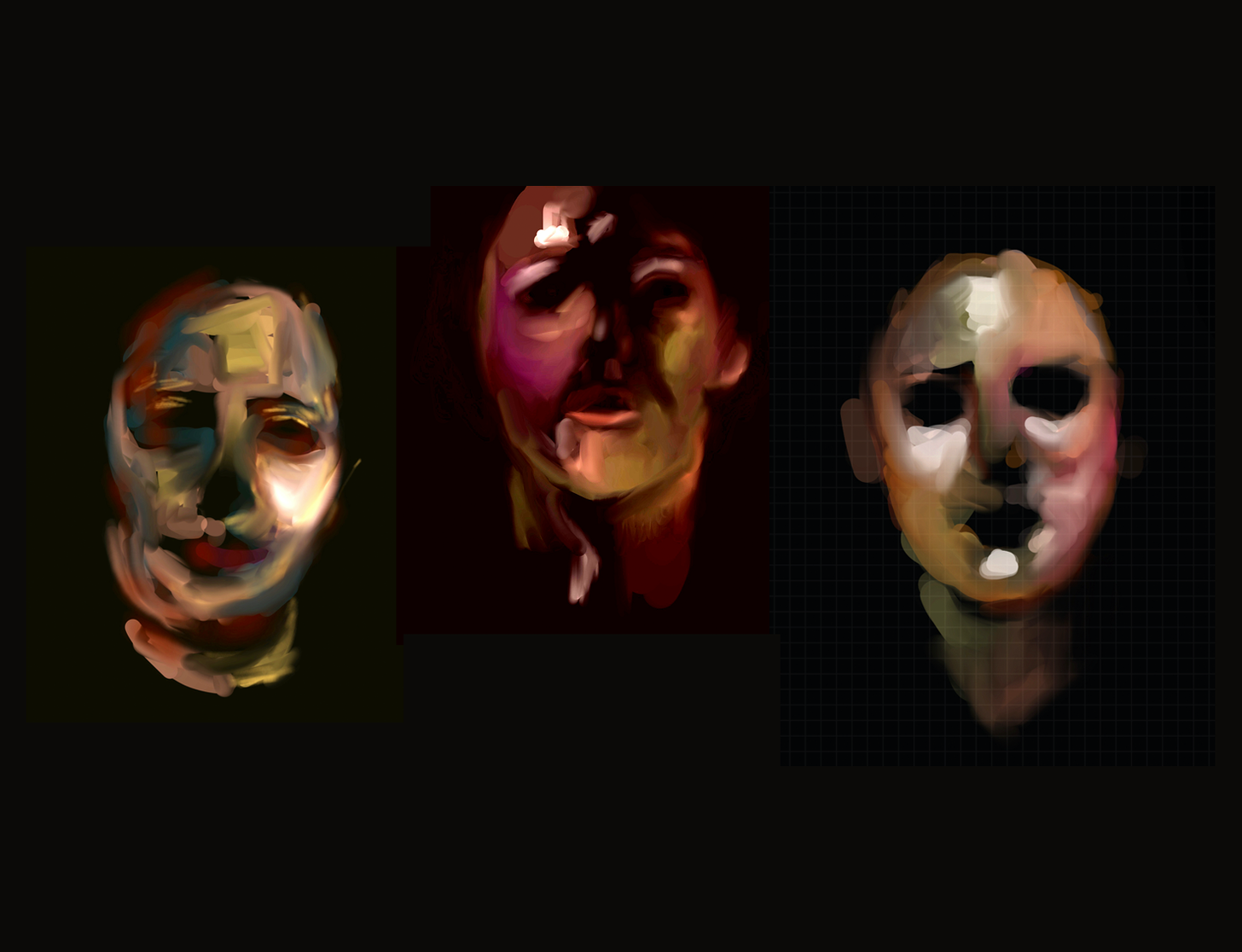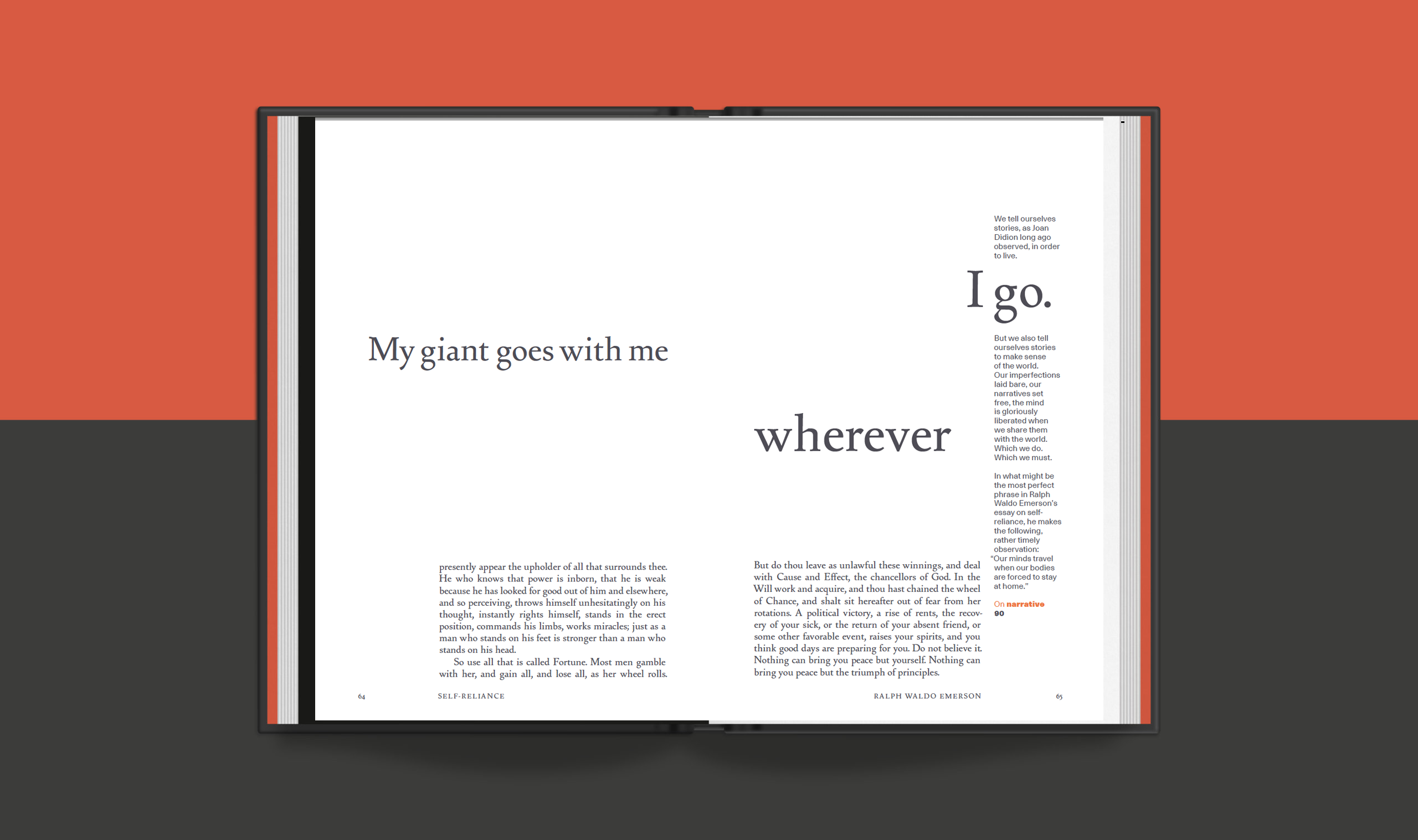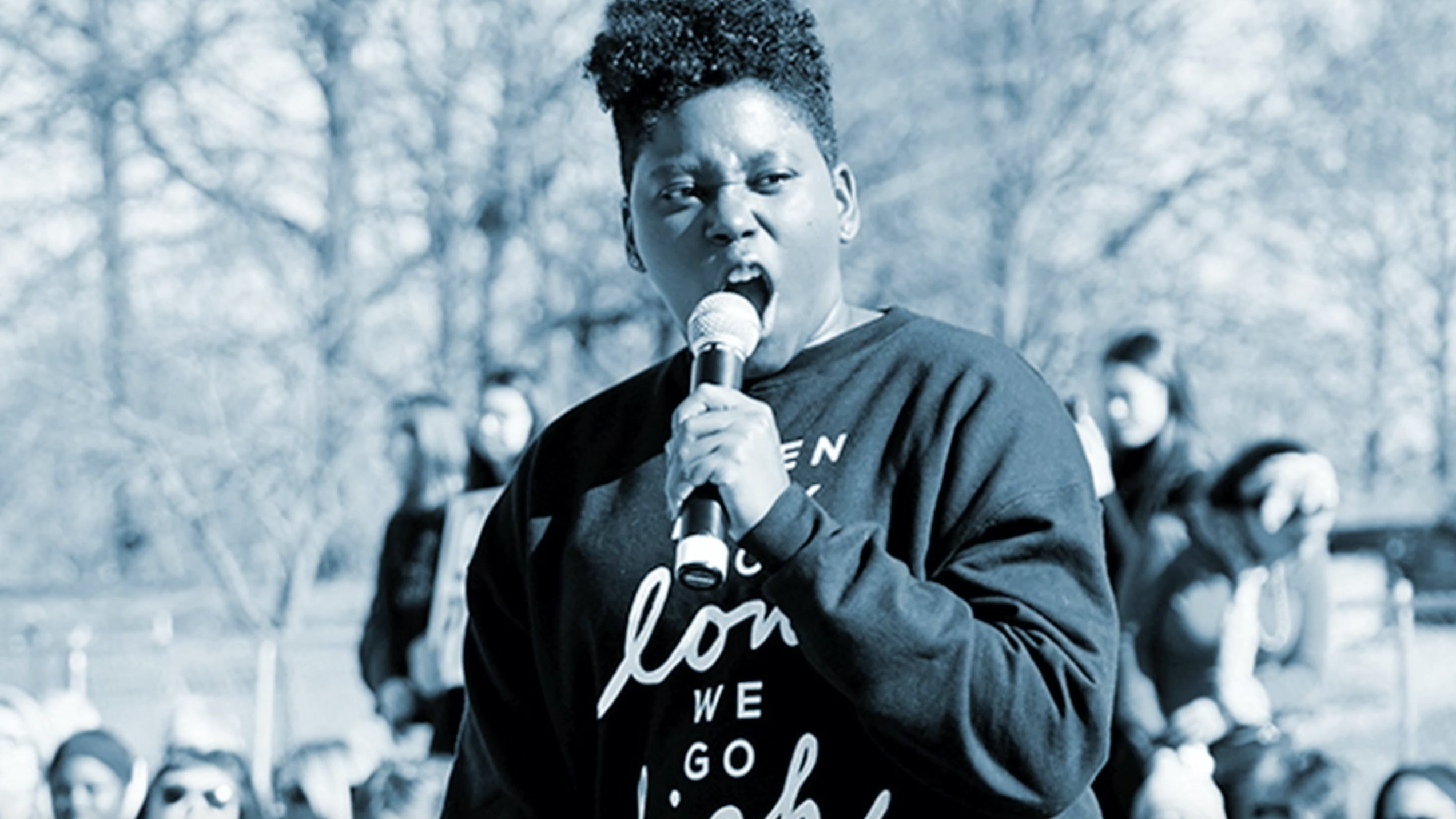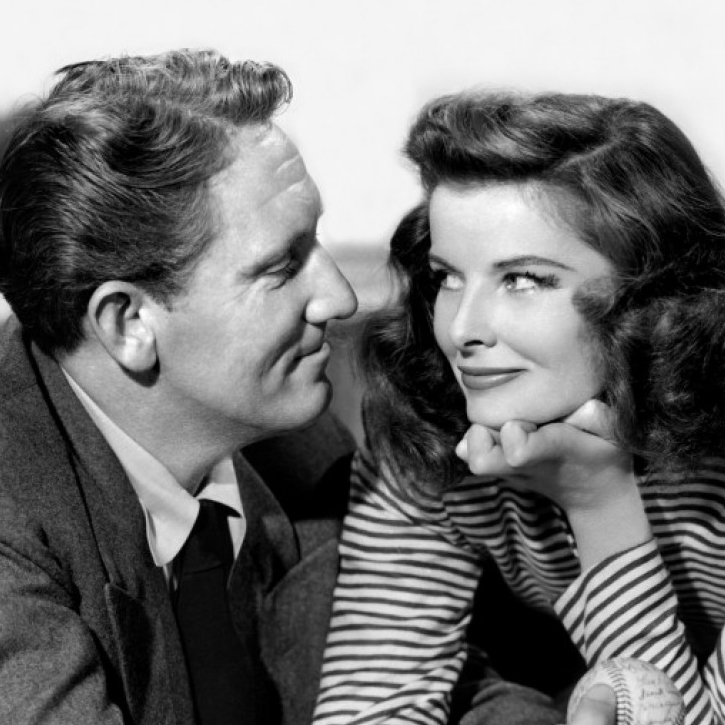
Jessica Helfand|The Self-Reliance Project
April 6, 2020
Canoeing

Spencer Tracy and Katherine Hepburn in Woman of the Year, Directed by George Stevens for MGM, 1942.

Emerson’s text is widely available to read online, but this new Volume edition—produced with Design Observer—elevates his wisdom through the printed word. With twelve essays from Jessica Helfand’s Self-Reliance Project: pledge now and order your copy today!
Woman of the Year is the first of nine films that Katherine Hepburn and Spencer Tracy would make together. To watch them on screen in this, their first-ever encounter, is almost other-worldly—like they’ve unearthed a sixth sense the rest of us never knew existed. It’s a stunning reminder that human connection trumps even the best script. (And it was, winning the Oscar for best original screenplay that year.)
Time magazine film critic Stephanie Zacharek once called Hepburn and Tracy an extraordinary equation—and they were. But equations, like relationships, demand reciprocity. In a moment in which the entire call-and-response dynamic of participatory life has been put on hiatus, that notion might be worth a bit of a rethink.
Particularly if you’re an actor.
To break things down and rebuild yourself (and your craft) is a familiar refrain for anyone undertaking serious graduate study, particularly within art disciplines. But for an actor, who can not gather with other actors to rehearse, who can not be fitted for a costume, or travel to an audition—who can not, under life as it currently exists, actually act—it’s a moment of reckoning. For what is an actor without an audience?
A person, that’s what.
Writing in New York Magazine last week, the critic Helen Shaw describes graduate study in the theatre as the practice of radical vulnerability—a phrase that simultaneously conjures the rigors of the MFA education and the emotional work that lies beneath it. To restrict, let alone remove the scaffolding—the training, the technique—is to lay bare the self: delicate and raw, but also capacious. (You do, in fact, contain multitudes.)
Is self-reflection a luxury in moments of crisis—or is that the entire point? Now more than ever, writes Aisha S. Ahmad, a political scientist who studies communities in conflict, we must abandon the performative and embrace the authentic.
I’m not so sure they’re not the same thing.
We think today of the word performative as a kind of fakery or artifice, a posture. But real performance—the kind that makes your heart soar—both originates (for the maker) and lands (for the receiver) in a much deeper, human place. Maybe that’s the sixth sense: mining those multitudes to find new equations, new connections to the self, new ways to communicate, to resonate, to love what you do so that someone else will love it, too.
As for Hepburn and Tracy, their powerful, if unorthodox love story would last until Tracy’s death, nearly thirty years later. He was complicated, conflicted, Catholic—and married. (She was not.) Asked later why she herself never married, Hepburn replied:
I like to paddle my own canoe.
Artists without galleries, designers without clients, actors without audiences—we’re all paddling our own canoes, now. To invent new equations for ourselves in the uncertainty of so much radical vulnerability is terrifying. It’s unprecedented. It’s profoundly isolating.
And it might be the best thing that ever happened to you.
What lies behind us and what lies before us, Emerson once wrote, are tiny matters compared to what lies within us.
Multitudes, indeed. The world, flawed as it is right now, still beckons.
Let the real work begin.
Observed
View all
Observed
By Jessica Helfand
Recent Posts
A quieter place: Sound designer Eddie Gandelman on composing a future that allows us to hear ourselves think It’s Not Easy Bein’ Green: ‘Wicked’ spells for struggle and solidarity Making Space: Jon M. Chu on Designing Your Own Path Runway modeler: Airport architect Sameedha Mahajan on sending ever-more people skyward
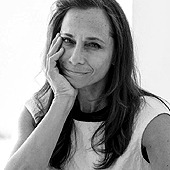 Jessica Helfand, a founding editor of Design Observer, is an award-winning graphic designer and writer and a former contributing editor and columnist for Print, Communications Arts and Eye magazines. A member of the Alliance Graphique Internationale and a recent laureate of the Art Director’s Hall of Fame, Helfand received her B.A. and her M.F.A. from Yale University where she has taught since 1994.
Jessica Helfand, a founding editor of Design Observer, is an award-winning graphic designer and writer and a former contributing editor and columnist for Print, Communications Arts and Eye magazines. A member of the Alliance Graphique Internationale and a recent laureate of the Art Director’s Hall of Fame, Helfand received her B.A. and her M.F.A. from Yale University where she has taught since 1994.
